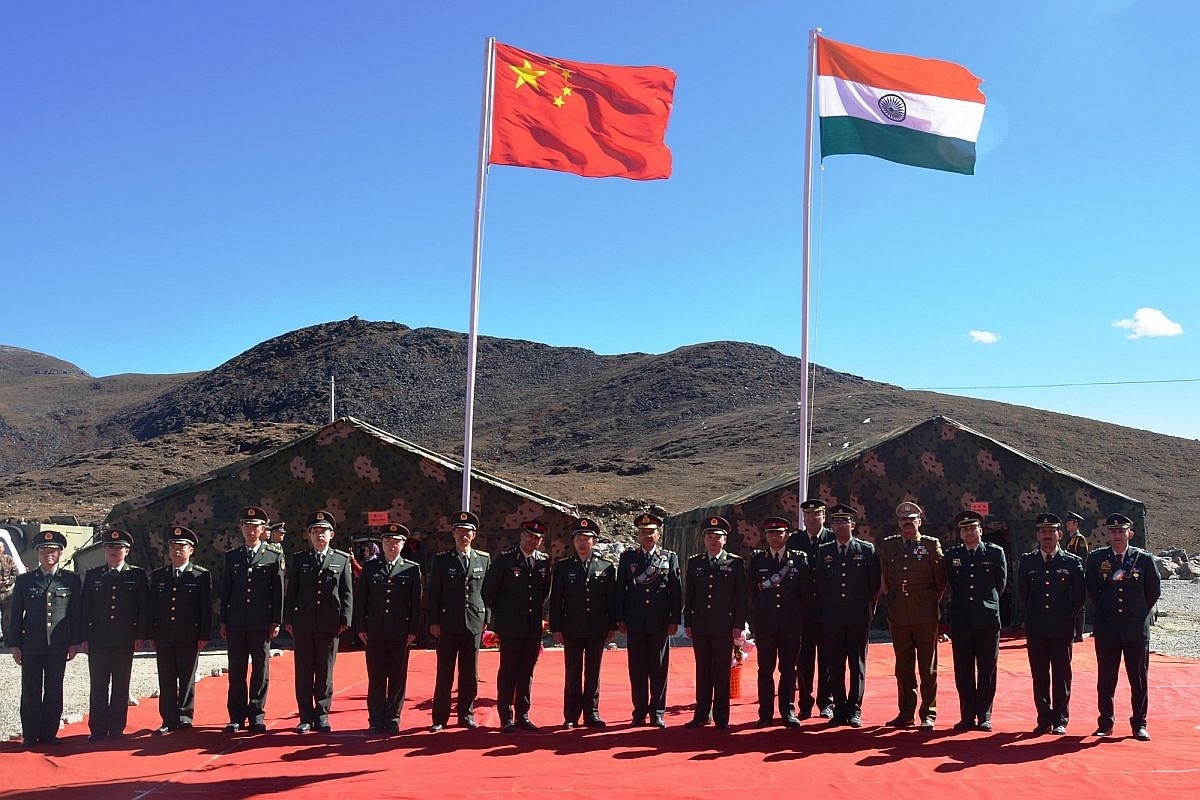Defence
Corps Commander Talks' 20th Round Fails To Break Deadlock, As Standoff At LAC Enters Its Fourth Year

India and China Corps Commanders. (Representative Image)
There was no breakthrough in the 20th round of India-China Corps Commander talks, although both sides agreed to engage in dialogue and maintain peace in the border areas.
The meeting took place at the Chushul-Moldo border meeting point on the Indian side on Monday and Tuesday (9-10 October).
This latest round comes two months after the 19th round of Corps Commander talks held in August, during which India asked for access to all remaining patrolling points, including those in Depsang and Demchok.
"Both sides exchanged views in a frank, open, and constructive manner to seek an early and mutually-acceptable resolution of the remaining issues along the LAC in the Western Sector. This was done in accordance with the guidance provided by the national leadership of the two countries and building on the progress made in the last round of Corps Commander's Meeting held on 13-14 August 2023," the Ministry of External Affairs said in a statement on Wednesday (11 October).
According to a report by Indian Express, the agenda included the disengagement of troops along the Line of Actual Control (LAC) and the broader de-escalation of troops in the Ladakh region.
Adherence to existing protocols and the sharing of patrol information to prevent ground-level clashes were also key discussion points.
In recent rounds of talks, there hasn't been significant progress regarding the resolution of legacy issues or a comprehensive troop de-escalation in eastern Ladakh.
Following the 19th round of military talks in August, a Major General-level meeting was convened by both sides to delineate the finer details of the points discussed during the corps commander-level discussions.
Field commanders have been working on potential scenarios for limited disengagement at mutually accepted points along the boundary, although none of these plans have been put into action as of yet.
This year marks the fourth consecutive winter since the commencement of the military standoff between India and China in May 2020.
In September last year, both countries undertook troop withdrawals, leading to the disengagement from Patrolling Point-15 in the Gogra-Hot Springs area of Eastern Ladakh, representing a significant step in de-escalating the military standoff initiated in May 2020.
Certain friction points, such as the Galwan Valley and the north and south banks of Pangong Tso, as well as the Gogra-Hot Springs area, have witnessed some resolution in the past three years with the establishment of buffer zones.
However, there has been no progress in addressing legacy friction points like the Depsang Plains and Demchok. It is estimated that around 50,000 to 60,000 troops remain deployed on both sides of the India-China border.
Support Swarajya's 50 Ground Reports Project & Sponsor A Story
Every general election Swarajya does a 50 ground reports project.
Aimed only at serious readers and those who appreciate the nuances of political undercurrents, the project provides a sense of India's electoral landscape. As you know, these reports are produced after considerable investment of travel, time and effort on the ground.
This time too we've kicked off the project in style and have covered over 30 constituencies already. If you're someone who appreciates such work and have enjoyed our coverage please consider sponsoring a ground report for just Rs 2999 to Rs 19,999 - it goes a long way in helping us produce more quality reportage.
You can also back this project by becoming a subscriber for as little as Rs 999 - so do click on this links and choose a plan that suits you and back us.
Click below to contribute.
Latest